Scott D. Stoller
Multi-Agent Spatial Predictive Control with Application to Drone Flocking (Extended Version)
Mar 31, 2022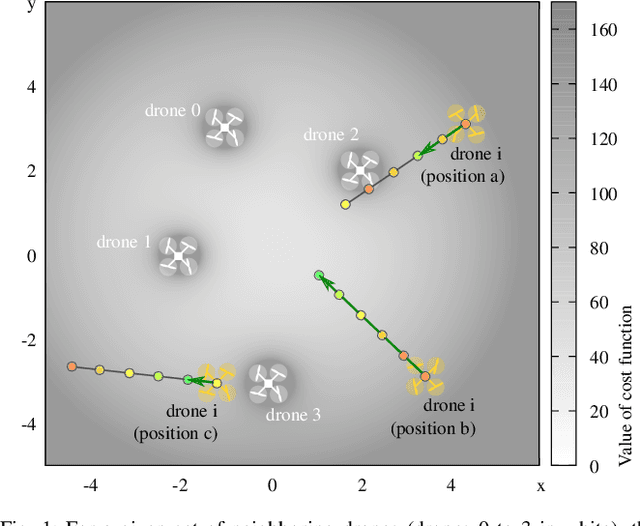
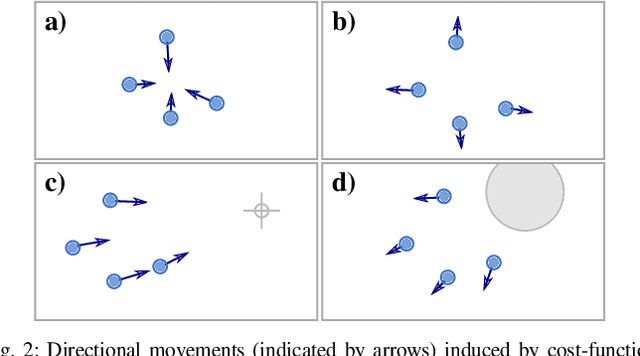
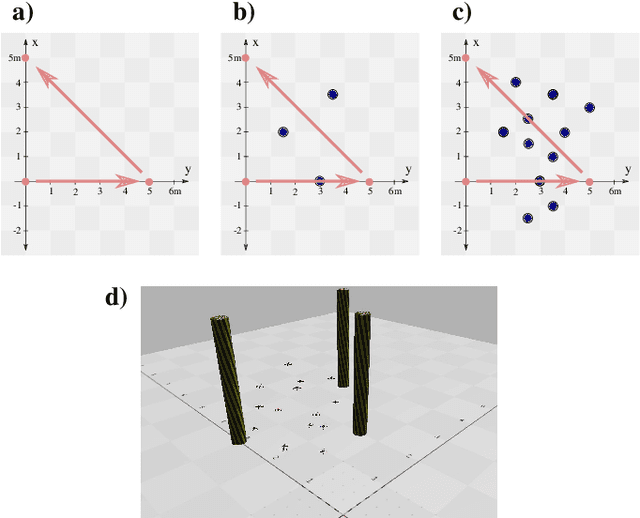
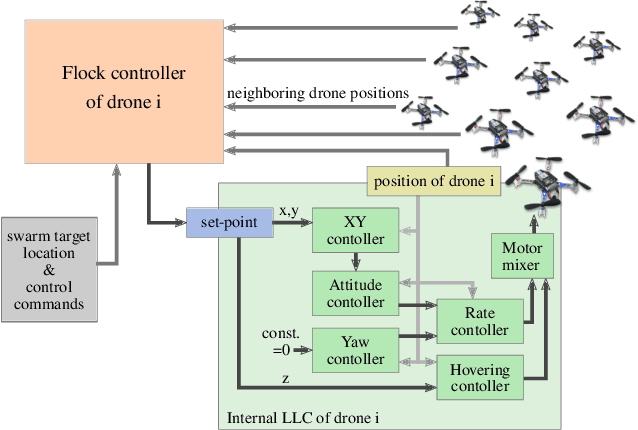
Abstract:We introduce the novel concept of Spatial Predictive Control (SPC) to solve the following problem: given a collection of agents (e.g., drones) with positional low-level controllers (LLCs) and a mission-specific distributed cost function, how can a distributed controller achieve and maintain cost-function minimization without a plant model and only positional observations of the environment? Our fully distributed SPC controller is based strictly on the position of the agent itself and on those of its neighboring agents. This information is used in every time-step to compute the gradient of the cost function and to perform a spatial look-ahead to predict the best next target position for the LLC. Using a high-fidelity simulation environment, we show that SPC outperforms the most closely related class of controllers, Potential Field Controllers, on the drone flocking problem. We also show that SPC is able to cope with a potential sim-to-real transfer gap by demonstrating its performance on real hardware, namely our implementation of flocking using nine Crazyflie 2.1 drones.
Runtime-Assured, Real-Time Neural Control of Microgrids
Feb 20, 2022
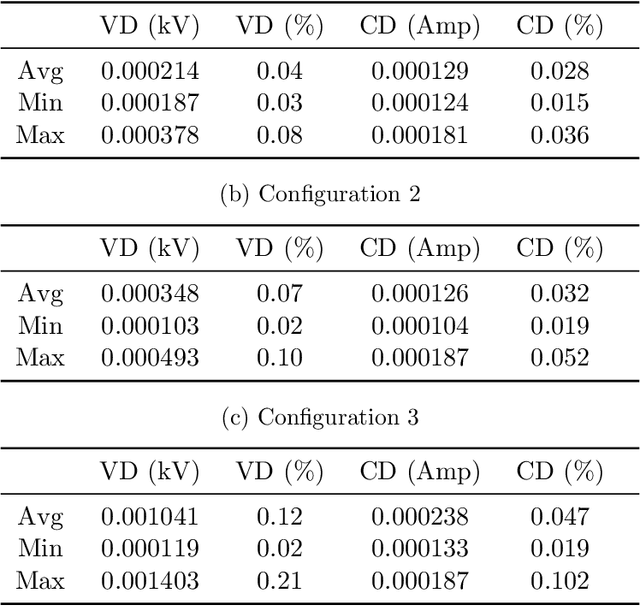


Abstract:We present SimpleMG, a new, provably correct design methodology for runtime assurance of microgrids (MGs) with neural controllers. Our approach is centered around the Neural Simplex Architecture, which in turn is based on Sha et al.'s Simplex Control Architecture. Reinforcement Learning is used to synthesize high-performance neural controllers for MGs. Barrier Certificates are used to establish SimpleMG's runtime-assurance guarantees. We present a novel method to derive the condition for switching from the unverified neural controller to the verified-safe baseline controller, and we prove that the method is correct. We conduct an extensive experimental evaluation of SimpleMG using RTDS, a high-fidelity, real-time simulation environment for power systems, on a realistic model of a microgrid comprising three distributed energy resources (battery, photovoltaic, and diesel generator). Our experiments confirm that SimpleMG can be used to develop high-performance neural controllers for complex microgrids while assuring runtime safety, even in the presence of adversarial input attacks on the neural controller. Our experiments also demonstrate the benefits of online retraining of the neural controller while the baseline controller is in control
Learning Attribute-Based and Relationship-Based Access Control Policies with Unknown Values
Aug 26, 2020
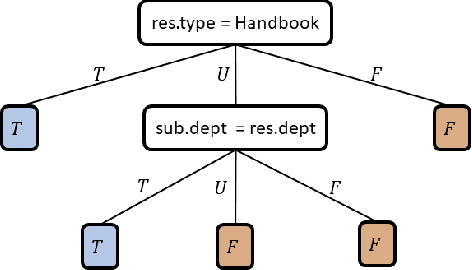
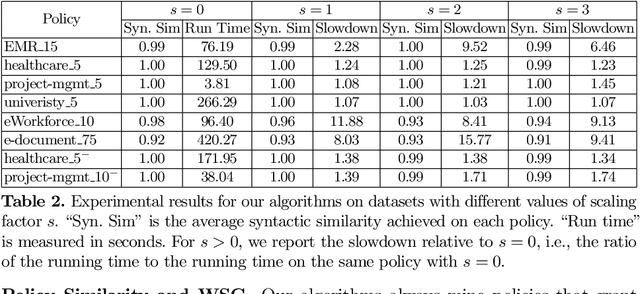

Abstract:Attribute-Based Access Control (ABAC) and Relationship-based access control (ReBAC) provide a high level of expressiveness and flexibility that promote security and information sharing, by allowing policies to be expressed in terms of attributes of and chains of relationships between entities. Algorithms for learning ABAC and ReBAC policies from legacy access control information have the potential to significantly reduce the cost of migration to ABAC or ReBAC. This paper presents the first algorithms for mining ABAC and ReBAC policies from access control lists (ACLs) and incomplete information about entities, where the values of some attributes of some entities are unknown. We show that the core of this problem can be viewed as learning a concise three-valued logic formula from a set of labeled feature vectors containing unknowns, and we give the first algorithm (to the best of our knowledge) for that problem.
Recursive Rules with Aggregation: A Simple Unified Semantics
Jul 26, 2020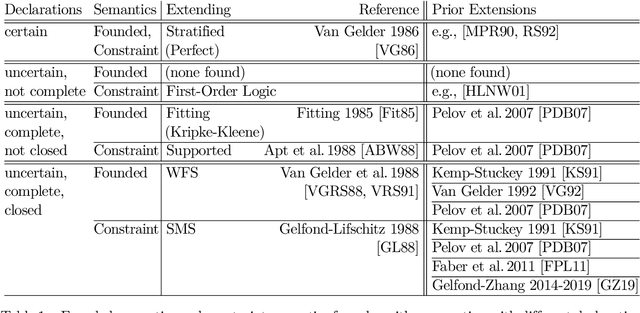

Abstract:Complex reasoning problems are most clearly and easily specified using logical rules, especially recursive rules with aggregation such as counts and sums for practical applications. Unfortunately, the meaning of such rules has been a significant challenge, leading to many different conflicting semantics. This paper describes a unified semantics for recursive rules with aggregation, extending the unified founded semantics and constraint semantics for recursive rules with negation. The key idea is to support simple expression of the different assumptions underlying different semantics, and orthogonally interpret aggregation operations straightforwardly using their simple usual meaning.
Knowledge of Uncertain Worlds: Programming with Logical Constraints
Oct 23, 2019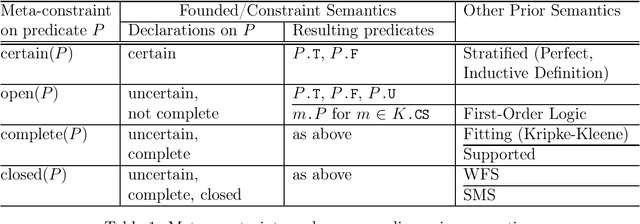
Abstract:Programming with logic for sophisticated applications must deal with recursion and negation, which have created significant challenges in logic, leading to many different, conflicting semantics of rules. This paper describes a unified language, DA logic, for design and analysis logic, based on the unifying founded semantics and constraint semantics, that support the power and ease of programming with different intended semantics. The key idea is to provide meta constraints, support the use of uncertain information in the form of either undefined values or possible combinations of values, and promote the use of knowledge units that can be instantiated by any new predicates, including predicates with additional arguments.
Neural Simplex Architecture
Aug 01, 2019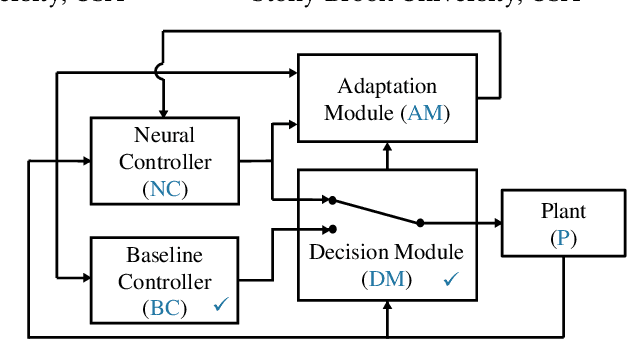

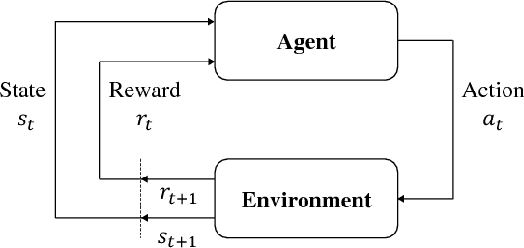

Abstract:We present the Neural Simplex Architecture (NSA), a new approach to runtime assurance that provides safety guarantees for neural controllers (obtained e.g. using reinforcement learning) of complex autonomous and other cyber-physical systems without unduly sacrificing performance. NSA is inspired by the Simplex control architecture of Sha et al., but with some significant differences. In the traditional Simplex approach, the advanced controller (AC) is treated as a black box; there are no techniques for correcting the AC after it generates a potentially unsafe control input that causes a failover to the BC. Our NSA addresses this limitation. NSA not only provides safety assurances for CPSs in the presence of a possibly faulty neural controller, but can also improve the safety of such a controller in an online setting via retraining, without degrading its performance. NSA also offers reverse switching strategies, which allow the AC to resume control of the system under reasonable conditions, allowing the mission to continue unabated. Our experimental results on several significant case studies, including a target-seeking ground rover navigating an obstacle field and a neural controller for an artificial pancreas system, demonstrate NSA's benefits.
Neural State Classification for Hybrid Systems
Jul 26, 2018
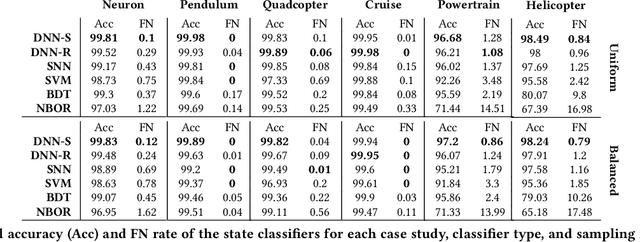

Abstract:We introduce the State Classification Problem (SCP) for hybrid systems, and present Neural State Classification (NSC) as an efficient solution technique. SCP generalizes the model checking problem as it entails classifying each state $s$ of a hybrid automaton as either positive or negative, depending on whether or not $s$ satisfies a given time-bounded reachability specification. This is an interesting problem in its own right, which NSC solves using machine-learning techniques, Deep Neural Networks in particular. State classifiers produced by NSC tend to be very efficient (run in constant time and space), but may be subject to classification errors. To quantify and mitigate such errors, our approach comprises: i) techniques for certifying, with statistical guarantees, that an NSC classifier meets given accuracy levels; ii) tuning techniques, including a novel technique based on adversarial sampling, that can virtually eliminate false negatives (positive states classified as negative), thereby making the classifier more conservative. We have applied NSC to six nonlinear hybrid system benchmarks, achieving an accuracy of 99.25% to 99.98%, and a false-negative rate of 0.0033 to 0, which we further reduced to 0.0015 to 0 after tuning the classifier. We believe that this level of accuracy is acceptable in many practical applications, and that these results demonstrate the promise of the NSC approach.
How to Learn a Model Checker
Dec 05, 2017
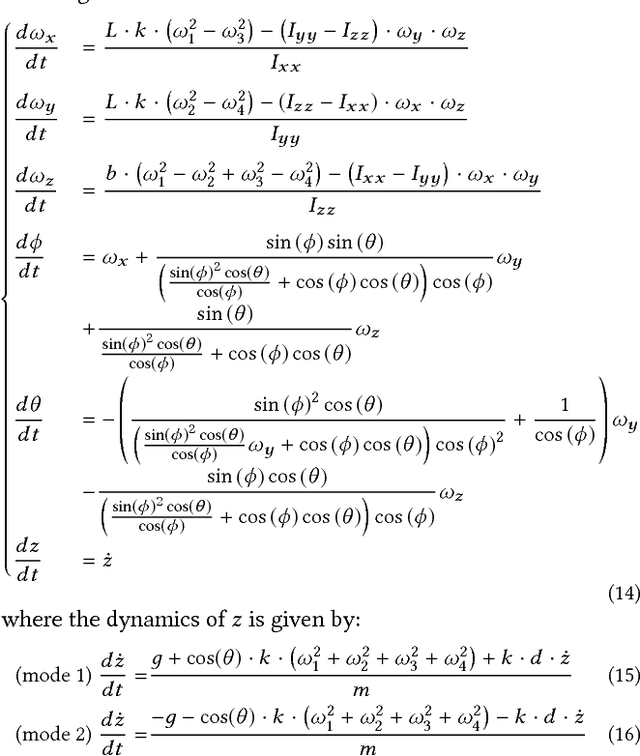
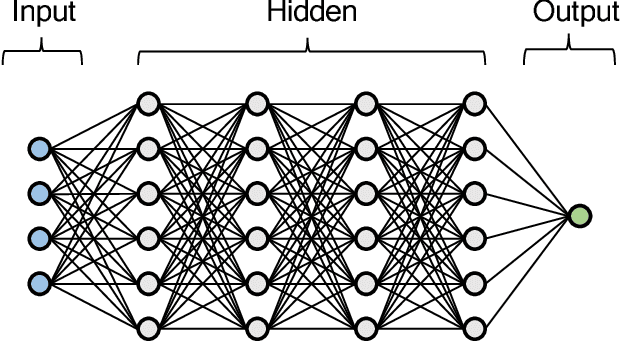
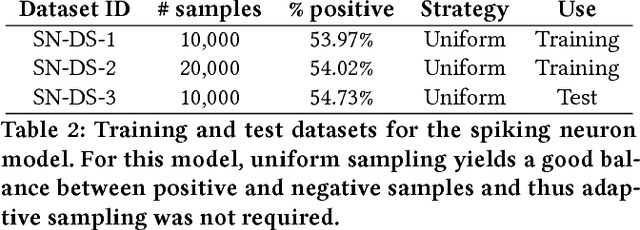
Abstract:We show how machine-learning techniques, particularly neural networks, offer a very effective and highly efficient solution to the approximate model-checking problem for continuous and hybrid systems, a solution where the general-purpose model checker is replaced by a model-specific classifier trained by sampling model trajectories. To the best of our knowledge, we are the first to establish this link from machine learning to model checking. Our method comprises a pipeline of analysis techniques for estimating and obtaining statistical guarantees on the classifier's prediction performance, as well as tuning techniques to improve such performance. Our experimental evaluation considers the time-bounded reachability problem for three well-established benchmarks in the hybrid systems community. On these examples, we achieve an accuracy of 99.82% to 100% and a false-negative rate (incorrectly predicting that unsafe states are not reachable from a given state) of 0.0007 to 0. We believe that this level of accuracy is acceptable in many practical applications and we show how the approximate model checker can be made more conservative by tuning the classifier through further training and selection of the classification threshold.
Founded Semantics and Constraint Semantics of Logic Rules
Apr 15, 2017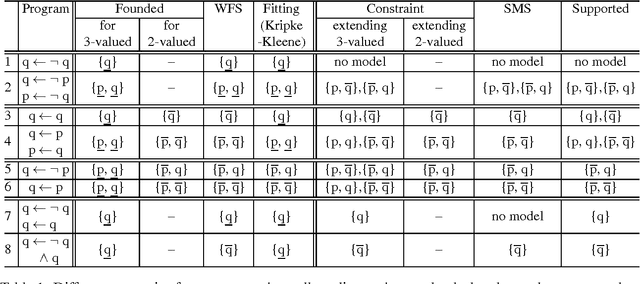
Abstract:This paper describes a simple new semantics for logic rules, founded semantics, and its straightforward extension to another simple new semantics, constraint semantics. The new semantics support unrestricted negation, as well as unrestricted existential and universal quantifications. They are uniquely expressive and intuitive by allowing assumptions about the predicates and rules to be specified explicitly. They are completely declarative and easy to understand and relate cleanly to prior semantics. In addition, founded semantics can be computed in linear time in the size of the ground program.
A survey on unmanned aerial vehicle collision avoidance systems
Aug 31, 2015Abstract:Collision avoidance is a key factor in enabling the integration of unmanned aerial vehicle into real life use, whether it is in military or civil application. For a long time there have been a large number of works to address this problem; therefore a comparative summary of them would be desirable. This paper presents a survey on the major collision avoidance systems developed in up to date publications. Each collision avoidance system contains two main parts: sensing and detection, and collision avoidance. Based on their characteristics each part is divided into different categories; and those categories are explained, compared and discussed about advantages and disadvantages in this paper.
 Add to Chrome
Add to Chrome Add to Firefox
Add to Firefox Add to Edge
Add to Edge